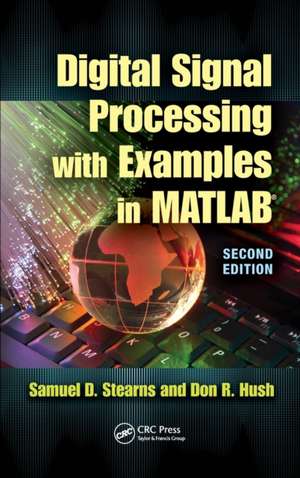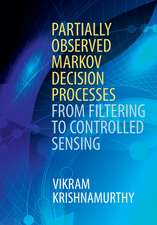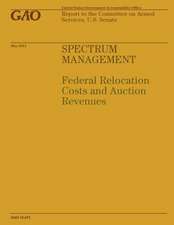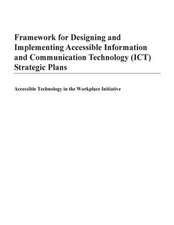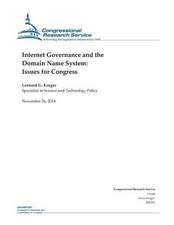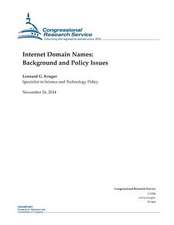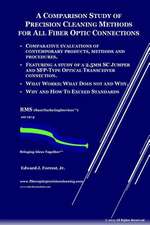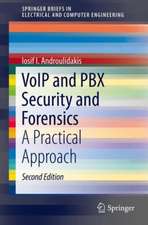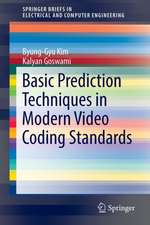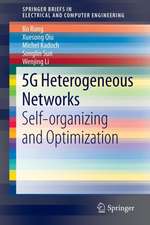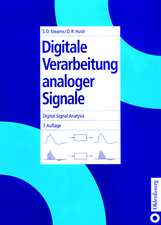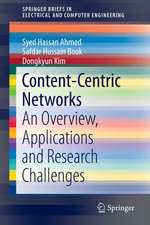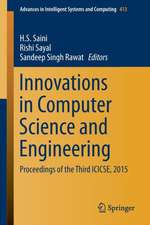Digital Signal Processing with Examples in MATLAB®: Electrical Engineering & Applied Signal Processing Series
Autor Samuel D. Stearns, Donald R. Hushen Limba Engleză Hardback – 4 apr 2011
Updated and expanded, Digital Signal Processing with Examples in MATLAB®, Second Edition introduces the basic aspects of signal processing and presents the fundamentals of DSP. It also relates DSP to continuous signal processing, rather than treating it as an isolated operation.
New to the Second Edition
- Discussion of current DSP applications
- New chapters on analog systems models and pattern recognition using support vector machines
- New sections on the chirp z-transform, resampling, waveform reconstruction, discrete sine transform, and logarithmic and nonuniform sampling
- A more comprehensive table of transforms
Preț: 795.88 lei
Preț vechi: 970.58 lei
-18% Nou
Puncte Express: 1194
Preț estimativ în valută:
152.31€ • 165.39$ • 127.94£
152.31€ • 165.39$ • 127.94£
Carte tipărită la comandă
Livrare economică 22 aprilie-06 mai
Preluare comenzi: 021 569.72.76
Specificații
ISBN-13: 9781439837825
ISBN-10: 1439837821
Pagini: 510
Ilustrații: 268 b/w images, 16 tables and 650-750 equations
Dimensiuni: 156 x 234 x 30 mm
Greutate: 0.84 kg
Ediția:Revizuită
Editura: CRC Press
Colecția CRC Press
Seria Electrical Engineering & Applied Signal Processing Series
ISBN-10: 1439837821
Pagini: 510
Ilustrații: 268 b/w images, 16 tables and 650-750 equations
Dimensiuni: 156 x 234 x 30 mm
Greutate: 0.84 kg
Ediția:Revizuită
Editura: CRC Press
Colecția CRC Press
Seria Electrical Engineering & Applied Signal Processing Series
Public țintă
UndergraduateCuprins
Introduction. Least Squares, Orthogonality, and the Fourier Series. Correlation, Fourier Spectra, and the Sampling Theorem. Linear Systems and Transfer Functions. Finite Impulse Response Filter Design. Infinite Impulse Response Filter Design. Random Signals and Spectral Estimation. Least-Squares System Design. Adaptive Signal Processing. Signal Information, Coding, and Compression. Models of Analog Systems. Pattern Recognition with Support Vector Machines. Appendix. Index.
Notă biografică
Samuel D. Stearns is a professor emeritus at the University of New Mexico, where has been involved in adjunct teaching and research since 1960. An IEEE fellow, Dr. Stearns was also a distinguished member of the technical staff at Sandia National Laboratories for 27 years. His principal technical areas are DSP and adaptive signal processing.
Don R. Hush is a technical staff member at the Los Alamos National Laboratory. An IEEE senior member, Dr. Hush was previously a technical staff member at Sandia National Laboratories and a professor at the University of New Mexico. He was also an associate editor for IEEE Transactions on Neural Networks and IEEE Signal Processing Magazine.
Don R. Hush is a technical staff member at the Los Alamos National Laboratory. An IEEE senior member, Dr. Hush was previously a technical staff member at Sandia National Laboratories and a professor at the University of New Mexico. He was also an associate editor for IEEE Transactions on Neural Networks and IEEE Signal Processing Magazine.
Recenzii
"This book will guide you through the mathematics and electrical engineering theory using real-world applications. It will also use MATLAB®, a software tool that allows you to easily implement signal-processing techniques using the computer and to view the signals graphically. … The reader of this text is fortunate to be guided by two wonderful teachers who translate the issues and understanding of using signal processing in the real world to examples and applications that open the door to this fascinating subject."
—From the Foreword by Dr. Delores M. Etter, Texas Instruments Distinguished Chair in Engineering Education and director of the Caruth Institute for Engineering Education, Southern Methodist University, Dallas, Texas, USA
Praise for the First Edition
In a field as rapidly expanding as digital signal processing (DSP), even the basic topics change over time, both in nature and relative importance. It is important, therefore, to have an up-to-date text that not only covers the fundamentals but also follows a logical development that leaves no gaps that readers must somehow bridge by themselves. Digital Signal Processing with Examples in MATLAB is such a text.
—IEEE Signal Processing Magazine, Vol. 22, No. 4, July 2005
It is a pleasure to recommend this book to the serious student of digital signal processing. It is carefully written and illustrated by many useful examples and exercises, and the material is selected to cover the relevant topics in this rapidly developing field of knowledge.
—the late Professor Richard W. Hamming, Bell Laboratories
—From the Foreword by Dr. Delores M. Etter, Texas Instruments Distinguished Chair in Engineering Education and director of the Caruth Institute for Engineering Education, Southern Methodist University, Dallas, Texas, USA
Praise for the First Edition
In a field as rapidly expanding as digital signal processing (DSP), even the basic topics change over time, both in nature and relative importance. It is important, therefore, to have an up-to-date text that not only covers the fundamentals but also follows a logical development that leaves no gaps that readers must somehow bridge by themselves. Digital Signal Processing with Examples in MATLAB is such a text.
—IEEE Signal Processing Magazine, Vol. 22, No. 4, July 2005
It is a pleasure to recommend this book to the serious student of digital signal processing. It is carefully written and illustrated by many useful examples and exercises, and the material is selected to cover the relevant topics in this rapidly developing field of knowledge.
—the late Professor Richard W. Hamming, Bell Laboratories
Descriere
Updated and expanded, the second edition of this bestselling text introduces the fundamentals of DSP. Along with discussing current DSP applications, this edition includes new chapters on analog systems models and pattern recognition using support vector machines as well as new sections on the chirp z-transform, resampling, waveform reconstruction, discrete sine transform, and logarithmic and nonuniform sampling. It also contains a more comprehensive table of transforms. Numerous exercises and examples harness the power of MATLAB® and MATLAB functions and examples are available for download online.
